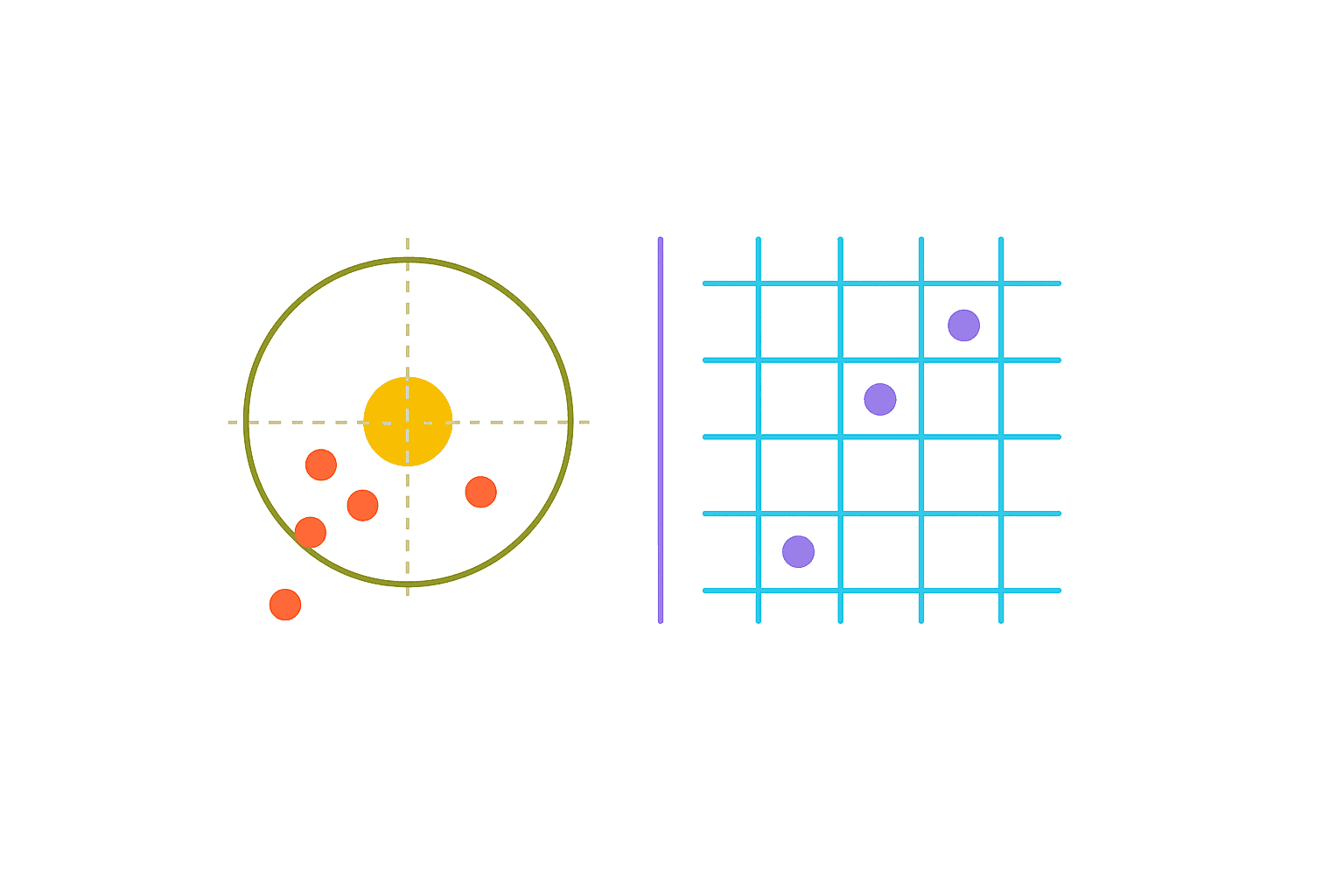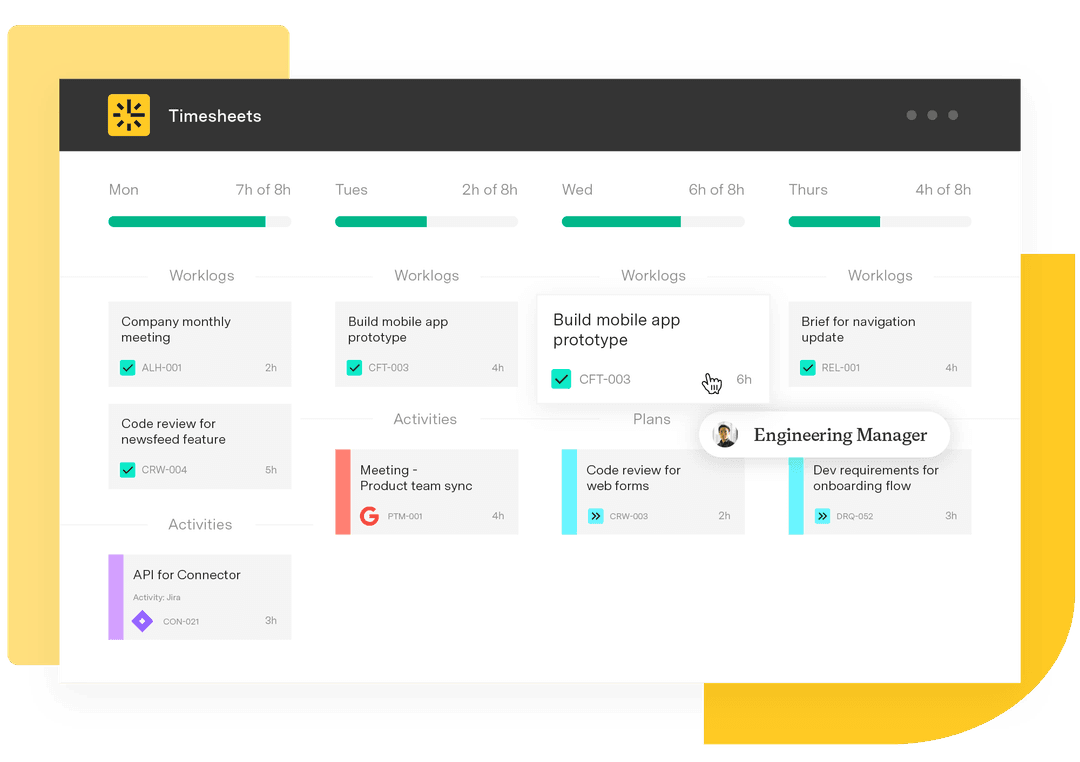Accuracy vs. precision: Key differences explained
Tempo Team
Even small variations in how data is measured can significantly impact business performance. That’s why understanding the concepts of accuracy versus precision is so important – knowing the difference helps teams set realistic expectations, evaluate results correctly, and improve project outcomes.
In this guide, we’ll define accuracy and precision, explain how they differ, and share examples of how they show up in time tracking, resource planning, and reporting. You’ll also learn how Tempo tools support more reliable measurement by improving how work is recorded, analyzed, and communicated.
What’s accuracy?
Accuracy refers to how close a measurement or result is to the correct or accepted value. This means comparing your internal data to a known baseline or actual outcome. In corporate and project contexts, these outcomes are often based on your business goals.
For example, an estimate was highly accurate if a project budget is estimated at $100,000 and the final cost is $101,000. The closer a measurement is to the true value, the more accurate it is.

The accuracy of any instrument used to collect data also matters. If a tool isn’t properly calibrated, the measurements it produces may consistently miss the true value.
Accuracy matters because it reflects whether data represents reality. When reports, forecasts, or metrics are accurate, leaders can make decisions more confidently.
What’s precision?
Precision refers to the consistency of repeated measurements or results. A process is precise if it delivers the same outcome multiple times, even if that outcome isn’t desired.
Imagine a team that logs eight hours of work every day, even though the actual effort fluctuates. The logs are precise because they are consistent; precision is closely tied to repeatability, which is the ability to consistently reproduce results under the same conditions using the same instrument.
Precision is important when tracking patterns, identifying trends, or comparing results across teams. High precision measurements help teams identify subtle trends over time, especially in areas like velocity tracking or workload forecasting.
What are the differences between accuracy and precision?
While accuracy and precision are both essential for reliable measurements, they reflect different aspects of data quality. Understanding the distinction between them helps teams diagnose reporting issues and improve how they evaluate performance. Here are four key differences.
1. Accuracy measures closeness to the true value. Precision measures how consistent results are with each other.
Accuracy answers the question, "Are we right?" It shows whether a result reflects reality. Precision answers the question, "Are we consistent?" It focuses on how often you get the same result under the same conditions. For example, if a cost estimate is always close to the final amount, it’s accurate. If several estimates are similar but far from the actual cost, they’re precise but not accurate.
2. Accuracy can be assessed from a single result. Precision requires multiple measurements to evaluate.
You only need one measurement to evaluate accuracy if you have a known reference or correct value for comparison. So if you know a project should take 100 hours and your estimate was 98, you can judge accuracy directly. Precision, on the other hand, emerges over time. Multiple measurements are required to determine if results are consistent, and thus precise.
3. A measurement can be accurate but not precise. It can also be precise but not accurate.
These traits are not mutually dependent – a team might deliver a highly accurate time estimate once but fail to repeat that performance. That would be accurate but not precise. Conversely, if a team always delivers similar time estimates that consistently miss the mark, they are precise but inaccurate. The ideal is to achieve both accuracy and precision, so that results are both correct and reliable.
4. Accuracy is improved by correcting bias. Precision is improved by reducing variability.
To improve accuracy, teams need to identify and eliminate factors that cause measurements to consistently miss the target. This may involve refining estimation methods, validating source data, or correcting flawed assumptions.
Precision improves when variability is reduced through standardized methods and tools. For example, using a calibrated instrument for time tracking or resource logging ensures greater consistency and supports precise measurement practice. That often means standardizing processes, using consistent inputs, and training teams to apply the same criteria every time they record or evaluate data.
Understanding these differences helps teams choose the right metrics and evaluate results in context. A report may be accurate in one area but imprecise in another. Recognizing these tradeoffs is key to improving both performance and planning.
Accuracy and precision examples
To make these concepts easier to understand, here are some accuracy and precision differences with examples.
Resource planning
A manager estimates that a team member can complete five tasks per sprint. This prediction is repeated across several planning cycles. If the employee consistently delivers only three completed tasks, the estimates are precise but not accurate. This affects both scheduling and velocity tracking.
Project reporting
A reporting dashboard displays a weekly budget variance for a major initiative. The variance is calculated consistently using the same formula. If the initial budget was incorrect, the reports may be precise but inaccurate, leading to poor data visualization and insights. This misleads teams that rely on the dashboard to make financial decisions.
Workload forecasting
A product lead forecasts development time based on average task durations from previous sprints. If those durations were logged inconsistently, the forecast may be inaccurate. Even if the estimated format is always the same, lack of accurate input may skew the result.
Performance reviews
An ops team gathers quarterly feedback using standardized rating forms. Because the same form is used each time, the data appears precise. However, if ops misunderstands the scoring criteria, the results may not accurately reflect employee performance.
Each of these examples shows how accuracy and precision impact day-to-day decisions. Teams that understand these differences can identify the cause of reporting issues and take steps to improve the quality of their data.
Improve measurement accuracy and precision with Tempo
Reliable decision-making depends on data that is both accurate and precise. Tempo’s Jira-native tools help teams collect, analyze, and report that data effectively.
Timesheets enables teams to track time with better accuracy. It captures work logs at the issue level, making it easier to validate how time was spent. Features like approval workflows, calendar integrations, and automated suggestions help users stay consistent and reduce errors.
Capacity Planner supports precision in resource allocation. It allows project leads to compare planned capacity with actual performance, refine forecasts, and spot trends in team availability. Because the tool relies on structured inputs and repeatable metrics, teams can track their planning accuracy over time and make adjustments based on real data and project scheduling needs.
Tempo helps teams move beyond guesswork. With the right tools in place, you can improve the accuracy of your measurements, increase the precision of your planning, and build stronger alignment across your projects.












































